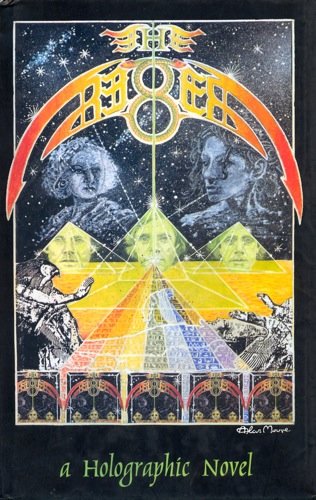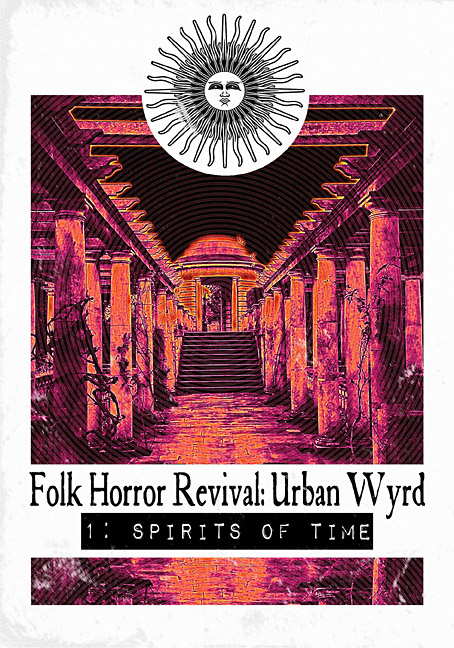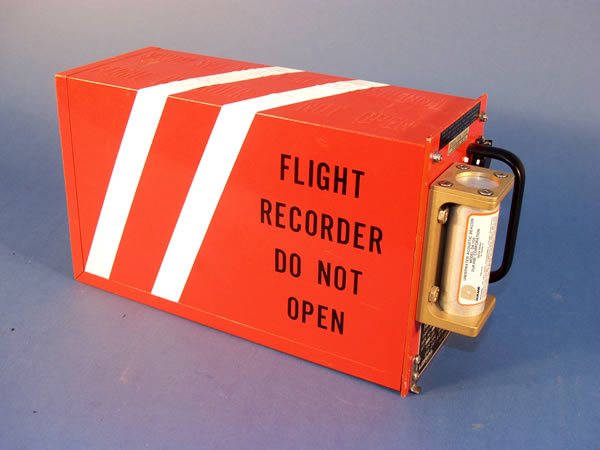 |
As seen on the return journey.
|
28/06/2019. Been quite a while since the
last trip. Parking up now and waiting. Across the road there’s a clutch of
trees jutting out of the verge. The sun is high and is flickered by the
branches. In the bleed the video shimmers as it struggles to pick out the
detail.
Peter Whitehead’s The Risen
(1994) follows three characters – a crystallographer, an actress and a sculptor
– as they retreat to an isolated house in Cornwall. There they entangle
themselves in a sequence of intense, shamanic rituals: initiatory processes that
help them establish contact with John, the novel’s fourth character. John is a
Syd Barrett avatar, a psychonaut who has vanished leaving only a set of coded
messages behind. Throughout the novel he exists as an absent presence, an
entity who haunts the text just as much as he haunts the characters. Reading
like a smart-drug infused cut-up of H.P. Lovecraft and Jacques Derrida, The Risen unravels following the
progress of these personalities as they intersect, interfere and entangle with
each other, on numerous planes at once.
In The Risen, what happens on
one plane of existence influences those that stand in horizontal and vertical
proximity. The past and the present; the ‘real’ world and the afterlife; the
textual realm and the digital; they each collide and intermingle as the novel
gradually works its way into a mind-bending field of synchronicity and
simultaneity. Whitehead called this structure holographic. He likened The
Risen to a half-silvered mirror through which a laser is fired and which
produces, in the spaces between, a ghostly, two-dimensional image that appears
also to stand in three dimensions.
 |
| 1997 paperback edition |
 |
| 1994 hardback edition |
28/06/2019. On the turn-in there was a familiar figure
strolling through the village. Recognized the gait and stance. Time to consider
my own. Head in to the place, down a path of heavy humming. Mixed feelings,
most to do with the reasons for the absence. But this much said, such
preparations are, and should be, for naught because – of course – it is not my
day.
Whitehead wrote many novels, but during the time I knew him – first as a
friend, then as a collaborator and then, for a while (2009-2014) as director of
his archive – he consistently referred to The
Risen as his touchstone work, a book that summed up how he wrote, why he
wrote and what he wrote about. The novel had its origins in Nighttrip (1969) an unproduced
screenplay about a long, mystical drive into the heart of an occult system.
Other prose versions followed as Whitehead moved through the 1970s and into the
1980s via different countries and different lives: film-maker, writer,
falconer. The version published in 1994 contained aspects of these prior
iterations but it also drew on the heady underground atmosphere of the
early-1990s, becoming in the process something of an unconscious lightning rod
for the neo-counterculture of the late twentieth century. The cult independent
publisher Creation Books initially had plans to issue The Risen, it was listed and is still carried by Midian Books and when
published by Hathor it generated interviews and features in the likes of Esoterra magazine. Whitehead read from The Risen alongside Iain Sinclair, Chris
Petit and Brian Catling at Disobey’s Subversion
in the Street of Shame event in July 1994 and references to books like Robert
Temple’s The Sirius Mystery (1976) –
the kind of speculative Egyptology that reached a critical mass of popularity
at the turn of the millennium – peppered the text. In short, it was exactly the
kind of novel you could read alongside Clive Prince and Lynn Picknett’s The Stargate Conspiracy (1999).
Another important influence was Rupert Sheldrake’s concept of morphic
resonance, an idea he outlined in two Whitehead favourites, A New Science of Life (1981) and The Presence of the Past (1988). In
short, morphic resonance describes a form of collective memory in which self-organising
systems pass on information through patterns of repetition, cycles that appear
able to extend influence across vast swathes of space and time. Sheldrake draws
on plant sciences and an array of animal behaviour to explain this model of
inheritance and to make a case for its significance as regards such doubted
phenomena as telepathy. In The Risen,
Whitehead used a similar concept to explain the psychic communication between
his ‘earthly characters’ and the vanished, transformed intelligence calling
itself John. He termed it ‘The R-Field’, the ‘R’ standing for ‘reincarnation’, amongst
other things. For Whitehead, this described an aether-like medium in which the
trans-dimensional and trans-temporal events of the novel take place. Whitehead
also gave the R-Field a powerful symbol within the text, a location that the
narrative obsessively returned to: a small inland
clearing of trees within the Cornish landscape that he called, simply, the copse.
28/06/2019. After
the Church, the plan was to drive back round the old haunts – the first house,
then the car park island with its smattering of shops. It's full when I get
there so there’s no photo. The house is also hard to find, even though
everything seems a lot smaller than I remembered. The very first visit to the
house had been a ghostly pursuit, the rest a kind of pupillage or initiation.
The copse is a thin space, a locus in which the various
planes that flow through the novel converge into a point of intersection. As
the novel progresses, it becomes clear that the copse is the place where John
disappeared, or rather moved on. Initially,
Whitehead’s use of the location recalls John Michell’s speculations on leys and
ceremonial mounds as meeting places between men and gods. That said, for
Whitehead, the copse does not relate solely to ideas from the Earth Mysteries
scene. He offers it as an interstitial location, the novel’s holographic
centre; a site at which one thing becomes another and in between a third space
momentarily opens. As describes in The
Risen, it is the letter ‘r’ which separates the word ‘corpse’ from ‘copse’.
One word contains the other even when it is not articulated. So too with John’s
progress in the novel. He’s not there, but neither is he entirely absent. His
presence ripples through the text, felt and recognised but never fully
manifest. There is no ‘return’ from the elsewhere but an increasing
re-enactment on the part of those who remain; a growing awareness that their
exploration of a set of interconnected texts is a re-plotting of John’s
narrative. In the esoteric world of The
Risen, this involuted unfolding of one narrative within the space of
another is intended to describe nothing less than a system of reincarnation.
28/06/2019. Leaving
the place, I’m circling: I’m driving round the same network of tight,
overcrowded roads that used to lead from one of the houses to another. We
worked at a few different locations dotted around the area and they formed a
kind of circle around the town bordered by the vestigial countryside. New
housing developments had ornamental lakes hewn out of the ground, pushing back
the tree line. Going through the motions, other journeys come back like the
time I drove there blind in thick fog. Others I spoke to reported appearances
up and down the road. Signalmen at the crossroads jostling with phantom
hitch-hikers. On more than one occasion, when driving with him, he would point
to a gathering of trees and announce that it was the copse. He seemed to be in
search of it. Seen from the moving car, these isolated alcoves blurred into
strange shapes: static points in the landscape lost in flicker. Difficult to
find on a return journey and even harder to capture in an image. The video
would shimmer as it struggled to pick out the detail.
*













